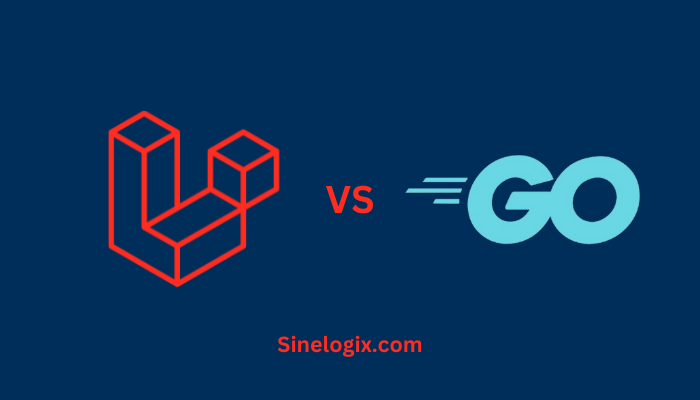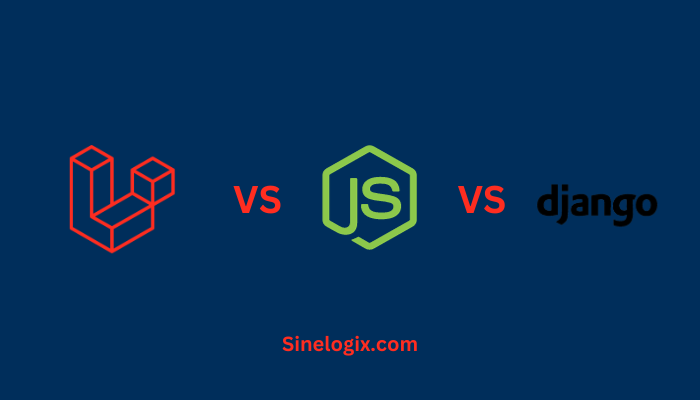Laravel, a PHP-based framework, and Go (often referred to as Golang), a statically-typed programming language, represent different paradigms in web development. In this detailed analysis, we’ll explore various aspects of Laravel and Go, shedding light on their features, performance, and suitability for different project scenarios.
Overview of Laravel and Go
Laravel: Laravel is a PHP framework known for its expressive syntax and developer-friendly environment. Following the MVC architectural pattern, Laravel provides tools for routing, templating (Blade engine), and ORM (Eloquent) for efficient database interactions. Its robust ecosystem and emphasis on rapid development make Laravel a popular choice for various applications.
Go (Golang): Go, commonly known as Golang, is a statically-typed language developed by Google. It is designed for simplicity, efficiency, and concurrency. Go’s syntax is clean and minimal, and it is renowned for its fast compilation times. Go’s standard library is comprehensive, and its concurrency model makes it well-suited for building scalable and performant applications.
Language and Ecosystem
Laravel: Built on PHP, Laravel leverages the extensive PHP ecosystem. Composer, the PHP package manager, enhances Laravel’s capabilities by providing access to a wide array of third-party libraries and tools. Laravel’s ecosystem includes the Artisan command-line tool for automating tasks, contributing to a streamlined development workflow.
Go (Golang): Go has a concise and powerful standard library that covers a wide range of functionalities. While the Go ecosystem might not be as extensive as some older languages, it is growing rapidly, and tools like “go get” make it easy to fetch and manage dependencies. Go’s simplicity and focus on performance contribute to an efficient and straightforward development experience.
Architecture and Design Philosophy
Laravel: Laravel adheres to the MVC architectural pattern, emphasizing a clean separation of concerns. The framework follows an opinionated approach, providing conventions that enhance developer productivity. Laravel’s design philosophy prioritizes expressive syntax, developer happiness, and the creation of elegant and maintainable code.
Go (Golang): Go is designed with simplicity and efficiency in mind. It embraces a clean and minimalistic syntax, avoiding unnecessary features. Go’s design philosophy emphasizes readability, simplicity of use, and the ability to write concurrent code easily. Goroutines, a lightweight thread of execution, are a central aspect of Go’s concurrency model.
Learning Curve and Documentation
Laravel: Laravel is known for its developer-friendly syntax, making it accessible for PHP developers. Comprehensive documentation, guides, and tutorials facilitate the learning process. Resources like Laracasts provide video tutorials, contributing to a supportive learning environment.
Go (Golang): Go’s learning curve is often considered gentle, especially for developers coming from languages like C or C++. The official Go documentation is well-organized and serves as an excellent resource for learning the language and its features. Go’s simplicity and focus on readability contribute to a straightforward learning experience.
Community and Support
Laravel: Laravel boasts a large and active community, contributing to its growth and improvement. Forums, third-party packages, and regular updates showcase the community’s engagement. Laravel’s popularity ensures ongoing support and a wealth of resources for developers.
Go (Golang): Go has a thriving and enthusiastic community. While not as extensive as some older languages, the Go community is known for its helpfulness and collaborative spirit. The Go team at Google actively supports the language, ensuring regular updates and improvements. Go’s community is steadily growing, especially in the context of cloud-native and scalable applications.
Performance and Scalability
Laravel: Laravel offers good performance for PHP applications and is suitable for various project sizes. Its scalability is enhanced by features like caching, queuing, and optimized database queries. Laravel Horizon assists in managing scalable applications efficiently.
Go (Golang): Go is renowned for its excellent performance. Its compiled nature and efficient concurrency model contribute to fast execution times. Go is particularly well-suited for building scalable and concurrent applications, making it a strong contender for performance-critical projects.
Middleware and Request Handling
Laravel: Laravel’s middleware system provides a flexible mechanism for filtering HTTP requests. Middleware can perform tasks like authentication, logging, and modifying incoming requests, enhancing Laravel’s ability to handle various aspects of request processing.
Go (Golang): In Go, middleware is typically implemented using a function that takes a handler and returns a new handler. This simplicity aligns with Go’s overall philosophy. The “net/http” package in the standard library provides the necessary tools for handling HTTP requests and creating middleware in Go.
Database Integration and ORM
Laravel: Laravel’s Eloquent ORM simplifies database operations with an expressive syntax. It allows developers to interact with databases using object-oriented methods, making it easy to perform common tasks like querying and updating records. Laravel’s database migration system streamlines schema management.
Go (Golang): Go does not come with a built-in ORM. However, there are third-party libraries like Gorm that provide ORM capabilities for Go applications. Alternatively, some Go developers prefer to interact with databases using raw SQL or use database/sql, a package in the standard library, for a more lightweight approach.
Template Engine
Laravel: Laravel employs the Blade templating engine, known for its simplicity and readability. Blade supports template inheritance and allows developers to create modular and reusable views. Laravel’s approach to templating contributes to the framework’s focus on clean and maintainable code.
Go (Golang): Go typically uses the standard library’s “html/template” package for template rendering. While not as feature-rich as some template engines, it provides a secure and efficient way to generate HTML. Some third-party template engines, like “gin-gonic/gin” for web frameworks, can also be used for more advanced templating needs.
Testing and Quality Assurance
Laravel: Laravel places a strong emphasis on testing with PHPUnit, providing a robust testing environment. Developers can conduct various types of tests, including unit tests, feature tests, and integration tests seamlessly. Laravel Dusk facilitates browser automation testing, ensuring comprehensive coverage for web applications.
Go (Golang): Go has a built-in testing package called “testing” that supports the creation of unit tests and benchmarks. The “go test” command simplifies the execution of tests. Go’s testing philosophy encourages simple and focused tests, contributing to a test-driven development (TDD) approach.
Development Speed and Prototyping
Laravel: Laravel’s elegant syntax and built-in features contribute to rapid development. Laravel Spark, a package for SaaS application scaffolding, accelerates the creation of subscription-based web applications. The framework’s focus on developer-friendly syntax aids in quick prototyping, making it ideal for startups and projects with tight deadlines.
Go (Golang): Go is designed for fast compilation and efficient execution, contributing to a quick development cycle. Its simplicity and explicitness can lead to faster prototyping, especially for experienced developers. Tools like “go run” enable developers to quickly compile and execute Go programs during development.
Mobile App Development
Laravel: While primarily a backend framework, Laravel can serve as the backend for mobile applications. Laravel Nova or API resources can be used to expose backend functionality for mobile app integration. Laravel’s API-centric approach facilitates the development of robust and secure APIs.
Go (Golang): Go is not traditionally used for mobile app development, but there are frameworks like Gomobile that allow developers to write parts of their application in Go and deploy them on mobile devices. Go’s efficiency and performance can be beneficial for certain types of mobile applications.
Community Trends and Adoption
Laravel: The Laravel community is dynamic, and the framework continues to evolve with frequent updates and new features. Laravel Vapor, a serverless deployment platform, reflects the community’s commitment to embracing modern cloud-native technologies. This adaptability ensures that Laravel remains relevant in the ever-changing landscape of web development.
Go (Golang): Go has gained significant traction, particularly in the context of cloud-native applications and microservices. Its simplicity, performance, and suitability for concurrent programming have contributed to its adoption in various industries. The Go community is active in promoting best practices and tools for modern software development.
Server Resource Utilization
Laravel: As an interpreted PHP framework, Laravel may require more server resources compared to frameworks written in lower-level languages. However, the ease of use, extensive feature set, and developer-friendly environment can justify the resource overhead in many scenarios.
Go (Golang): Go’s compiled nature and efficiency contribute to optimal server resource utilization. Its lightweight concurrency model ensures that Goroutines use minimal resources, making it well-suited for applications with high concurrent loads. Go’s efficiency is particularly beneficial for projects with stringent resource requirements.
Ecosystem and Third-Party Integrations
Laravel: Laravel’s ecosystem is rich and diverse, with a wide array of third-party packages available through Composer. Laravel Forge simplifies server provisioning and deployment, while tools like Laravel Mix streamline asset compilation. The availability of packages and integrations enhances the development workflow and supports a variety of use cases.
Go (Golang): Go’s ecosystem is growing steadily, and it includes packages and libraries for a range of use cases. The official package manager, “go modules,” simplifies dependency management. Go’s simplicity and focus on standardization contribute to a consistent and reliable ecosystem. However, it may not have the same breadth as more mature languages.
Containerization and Microservices
Laravel: Laravel applications can be containerized using tools like Docker, allowing for seamless deployment and scalability. Laravel’s modular structure and support for microservices architectures make it suitable for building distributed systems. Laravel Horizon aids in managing scalable Laravel applications efficiently.
Go (Golang): Go is well-suited for microservices architectures and containerization. Its efficiency and performance make it an excellent choice for building lightweight and scalable microservices. Tools like Docker and Kubernetes integrate seamlessly with Go applications, contributing to the widespread adoption of Go in the realm of containerized applications.
Internationalization and Localization
Laravel: Laravel provides robust support for internationalization and localization. Developers can easily manage language files, translate content, and adapt the application to different locales. Laravel’s localization capabilities contribute to building globally accessible web applications, a crucial aspect for projects targeting diverse audiences.
Go (Golang): Go, being a language with a focus on simplicity, does not provide built-in support for internationalization and localization. Developers often implement internationalization features using third-party libraries or by managing translations manually. While not as feature-rich as Laravel in this aspect, Go allows flexibility in implementing internationalization based on project requirements.
User Authentication and Authorization
Laravel: Laravel simplifies user authentication and authorization through the built-in Laravel Passport and Laravel Sanctum packages. These packages provide convenient solutions for API authentication and token management. Laravel’s focus on security features ensures a robust foundation for implementing user authentication and access control.
Go (Golang): Go does not have a built-in solution for user authentication and authorization. However, developers can use third-party packages like “gorilla/mux” for routing and “oauth2” for OAuth2 authentication. Go’s flexibility allows developers to choose authentication and authorization solutions that align with project requirements.
SEO-Friendly Routing and URLs
Laravel: Laravel’s routing system allows developers to create clean, SEO-friendly URLs. The framework’s expressive routing syntax and the ability to define named routes contribute to building URLs that are both human-readable and optimized for search engines. Laravel’s approach to routing enhances the overall SEO performance of applications.
Go (Golang): Go’s design philosophy is more focused on backend development and building APIs rather than server-side rendering for SEO optimization. While developers can create clean and readable URLs using Go, additional techniques may be required for SEO optimization in frontend applications.
Related Articles:
Conclusion
Choosing between Laravel and Go depends on project requirements, development preferences, and the specific use case. Laravel excels in scenarios where rapid development, a rich ecosystem, and PHP integration are crucial. It is particularly suitable for projects with frontend rendering and a need for a robust MVC framework.
On the other hand, Go’s strengths lie in its simplicity, performance, and suitability for building scalable and concurrent applications. Go is an excellent choice for projects involving microservices, cloud-native development, and situations where optimal resource utilization is critical.
Ultimately, the decision between Laravel and Go should align with the unique needs and goals of the project, considering factors such as development speed, performance requirements, and the expertise of the development team. Both Laravel and Go contribute significantly to the diverse landscape of web development, catering to different aspects of the ever-evolving technological landscape.




